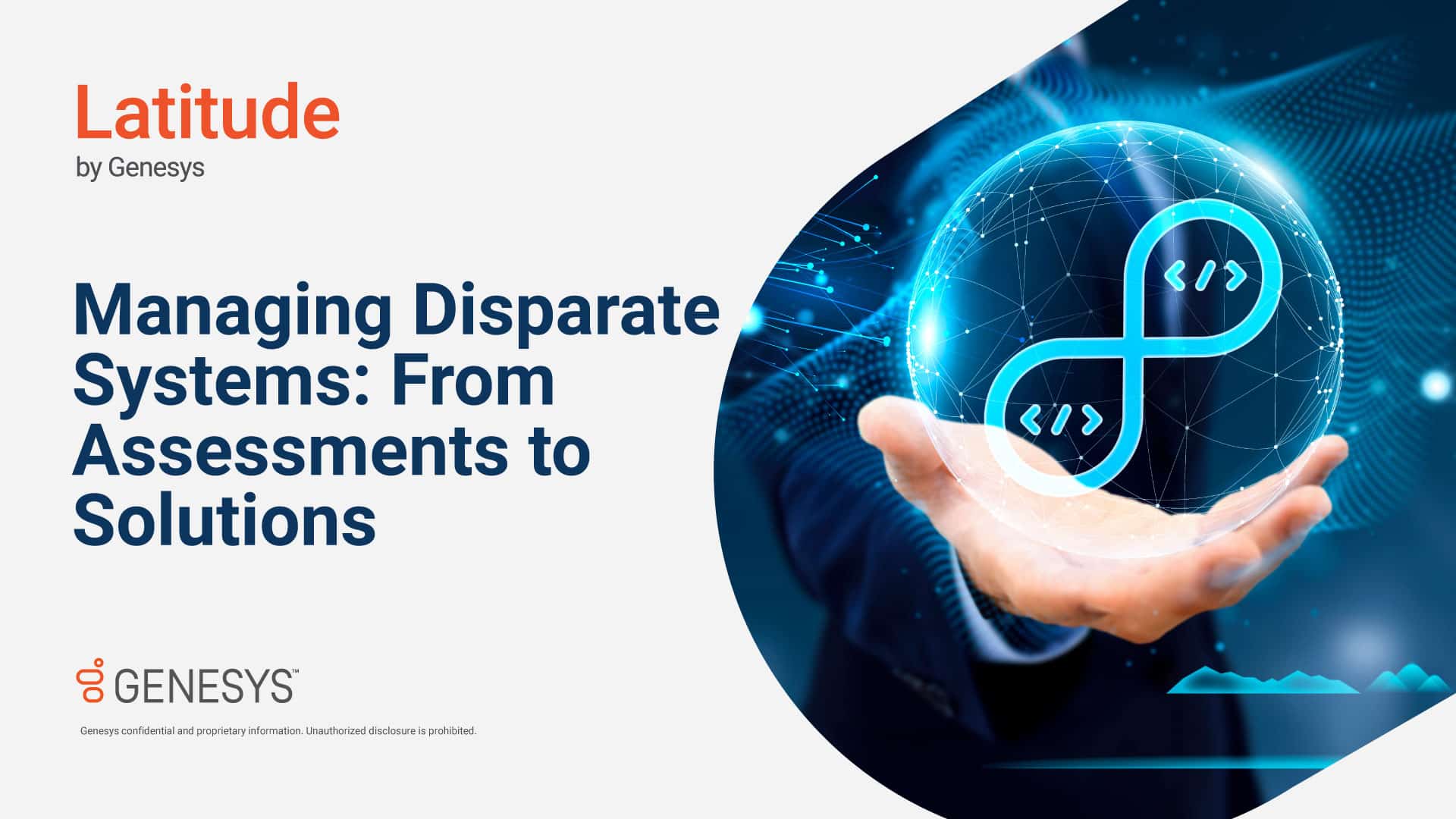
Managing Disparate Systems: From Assessments to Solutions
Managing disparate technology systems inevitably brings complex challenges for businesses. When critical business systems don’t “talk to each other,” teams spend additional resources to keep the business functioning. As businesses attempt to overcome these system silos that can develop over time, this article (based on a previous Receivables Info webinar in which Latitude appeared) will provide some tips and tricks to deploy for making the process easier, creating efficiencies in organizations, and improving the flow of data.
A World of Silos
Receivables organizations typically have several mission critical systems necessary for business operations, including a system of record, a document management system, phones and dialers, websites and portals, and accounting systems. When those systems don’t “play nicely,” this can develop into problems, or at minimum extra lift and reduced efficiency for the organization. Particularly in such a data-driven industry, the flow of data is critical to operational efficiency as well as regulatory compliance.
Far from a unique problem, this is a common thread among many financial institutions including receivables businesses. Organic business growth combined with evolving technologies creates common opportunities and challenges that must be addressed; however, to think the root of the issue is purely an organizational mistake or a faulty business model would be an overly simplistic assessment. Thus, the challenges and potential solutions are both worth exploring with an honest assessment, a problem-solving attitude, and without shame for the problem itself.
The Challenge of Separate Systems
As technology and application stacks evolve and businesses grow through organic growth or new acquisitions, the challenge of separate systems can accelerate to cause significant infrastructure impediments. These challenges affect both debt buyers and debt collectors alike and may be compounded as the partnership component or M&A moves come into play.
Data sharing with organizations that are limited by siloed technology, or sharing from your own organization’s technology limitations, reduces ROI and increases processing time from purchase to collection. Potential regulatory and audit roadblocks add an additional layer of complexity and risk to an already challenging issue.
Assessing the Problem
In addition to extra FTE resources, the issue opens up additional risk as each manual action may increase opportunities for human error. Integration issues may also create compounding scalability and reporting complications. Further, modern digital consumers expect to self-serve on intuitive, convenient platforms with instant results. Hence, there are many reasons to move toward optimizing integration wherever possible.
As with any large project, it’s important to start with a careful assessment of the issues at hand, including building process flows and diagrams to see it visually. This will greatly assist in defining the problem and knowing how to solve it most effectively, as each business will have particular pain points that need to be prioritized based on multiple factors such as risk, cost, and long-term value. This will likely need to involve open conversations that include both the C-Suite and the technology professionals who have been solving the problems for a full understanding of what’s “behind the curtain.”
Solving the Problem
As organizations look at improving the overall collections and operations models for more synchrony between systems, better real-time information, and improved payment processing to CRM integration, pre-built integrations come to the surface as an important factor. The good news is that there are increasing integration solutions; the not so good news is it generally requires upfront investment in the short term to enable optimization for the long term.
On the flip side, it’s important not to jump into any solutions without careful thought and consideration. Sometimes just because a solution is new and cutting-edge does not necessarily mean it’s the right or best fit for your organization’s long-term operations. All implications of any new software implementation should be weighed strategically, ideally with consultation from professionals, before implementation, or you may be potentially adding to a tangled web rather than detangling it.
Latitude by Genesys Solutions
For receivables organizations looking to improve cross-system integrations in business processes, feel free to reach out to the team at Latitude by Genesys for a product demo or consultative meeting to determine the issues at hand and the best way forward for the needs of your organization.
Latitude products are loaded with pre-built integrations with optional package add-ons such as Genesys Cloud. While Latitude products may or may not be best suited for your organization, our team can help assess whether we can be of value and work in collaboration with outside vendors your organization may use to improve integrations.
With Latitude by Genesys, you can seamlessly optimize your agent resources, increase data quality and mitigate loss. Assess how your collections processes are performing across email, SMS, IVR and live agents. Then make strategic decisions based on insights, including managing account assignments, optimizing ROI and streamlining processes.
Learn more on our Receivables Info profile or at genesys.com, or contact Cris Bjelajac to set up a consultative meeting.
About Latitude by Genesys
Latitude by Genesys® is a comprehensive debt collection and recovery solution for managing all pre- and post-charge-off accounts and workflow processes. It provides collectors and agents with the tools to manage the debt collection and recovery process and provides full functionality for the collector’s or agent’s desktop and deploys as a true zero-footprint, browser-based environment. Since 1996, Latitude’s focus has been to provide the most forward-thinking, attractive solution to the business needs of different people and companies in the accounts receivable management (ARM) space. Acquired by Genesys in 2016, Latitude is continually growing, innovating, and reshaping the technology expectations and customer experiences of ARM companies and their consumers.




